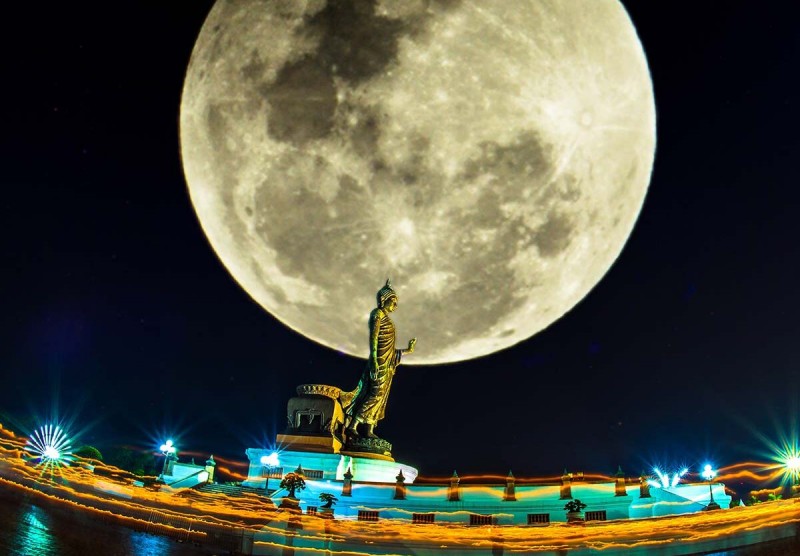
As the calendar turns to August 23, 2023, a sense of anticipation and excitement envelops the global space community as the Indian Space Research Organisation (ISRO) prepares to achieve a historic feat - landing Chandrayaan-3 on the uncharted south pole of the Moon. Amid this modern marvel of space exploration, it's intriguing to explore the diverse beliefs about the Moon that have woven through the fabric of different religions across the world.
In Hinduism, the Moon holds a place of significance as the deity "Chandra." As a symbol of coolness, calmness, and the passage of time, Chandra is revered and often depicted as a handsome figure carrying a crescent moon on his head. The waxing and waning phases of the Moon reflect the cyclic nature of life and creation, echoing the cyclical wheel of existence. In festivals like Karva Chauth, the Moon holds a central role as couples pray for the longevity and well-being of their spouses.
The Islamic faith, too, holds the Moon in reverence. The Islamic calendar is lunar-based, marking months by the cycle of the Moon's phases. The sighting of the new Moon heralds the beginning of the holy month of Ramadan, while Eid-ul-Fitr is celebrated after the completion of a lunar cycle. The Moon's symbolism in Islam extends to deeper metaphors, representing the guidance and light of Allah amidst the darkness of ignorance.
In Christianity, the Moon often appears metaphorically in biblical texts. The changing phases have been linked to passages about change and transformation. The story of the creation of lights in the sky - the greater light (Sun) to rule the day and the lesser light (Moon) to rule the night - conveys the divine order in the cosmos. Moreover, lunar references in Christian liturgy remind believers of the cyclical nature of time and the eternal presence of God's light.
Ancient cultures, such as those of the Native Americans, also wove intricate lunar beliefs. Tribes like the Lakota considered the Moon a symbol of renewal and the passage of seasons. The lunar calendar guided their planting and harvesting, and each full Moon was associated with unique names reflecting the natural world's rhythms.
Buddhism finds symbolic significance in the Moon, representing the serene and enlightened mind. The cool and calm nature of the Moon aligns with the state of inner peace sought by Buddhists. The Moon's reflection in water, untouched and unaltered, symbolizes a mind untainted by desires and attachments.
As Chandrayaan-3 inches closer to its lunar landing, it's fascinating to see the threads of lunar beliefs intertwine across religions. While the technological marvel of the mission stands as a testament to human progress, the diverse interpretations of the Moon remind us of the universal human connection to the cosmos. The Moon, a common celestial entity, resonates differently in each faith, reflecting humanity's collective awe, wonder, and search for meaning in the vast expanse of the night sky.
Today, as we await Chandrayaan-3's landing, let's appreciate how the Moon's significance has shaped diverse spiritual narratives. While cultures and faiths may differ, the Moon's luminous glow unites us all under the same celestial canopy, fostering a shared sense of wonder and curiosity about the universe we call home.
The Notable "Navratnas" of Emperor Akbar's Court and Tulsidas's Unique Response
Celebrating the Auspicious 7th Monday of Sawan: 21 August 2023
Nag Panchami 2023: Devotees Flock to Temples on the occasion